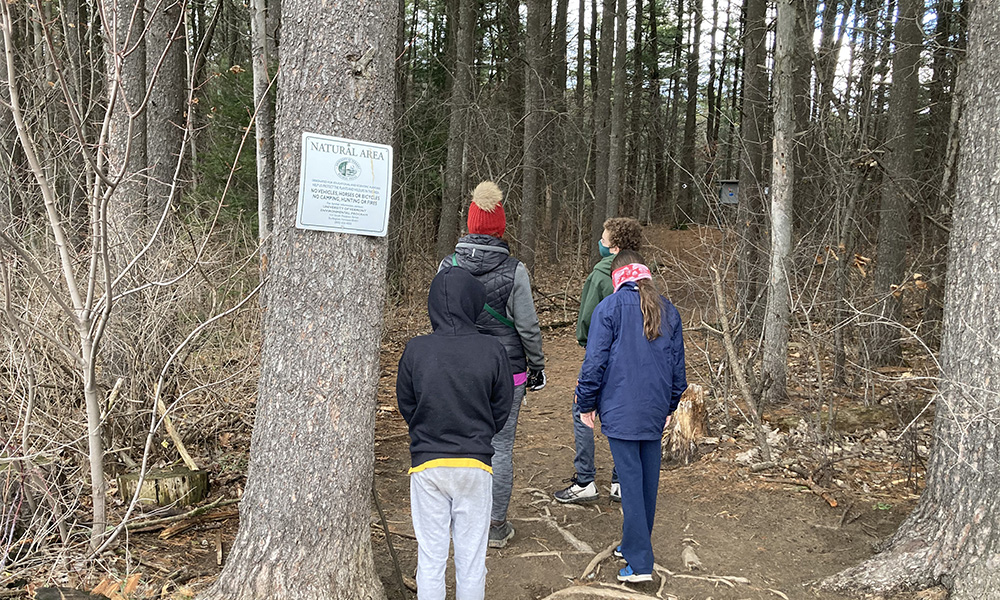COVID-19 Increases Visitors to Urban Natural Areas
Jan. 6th 2021What does it take to get some people outdoors experiencing nature? Researchers find that for some urban dwellers, it took COVID-19.
A new study at the University of Vermont (UVM) shows that during the early months of COVID-19, more than a quarter of people visiting local parks had never or very rarely accessed their community’s natural areas prior to the pandemic.
“Like many people, we noticed a large increase in the number of visitors to urban forests and parks in the early days of the pandemic,” said the study’s senior author Brendan Fisher, director of UVM's Environmental Program and its natural areas. “We wanted to understand how people were using local nature to cope with the physical and mental challenges of the COVID-19 pandemic.”
The UVM study published in December 2020 finds that from late March to early June, nearly 70 percent of respondents to a survey increased their visits to local natural areas in the vicinity of greater Burlington, an area of roughly 214,000 residents, or roughly a third of the state’s population. Survey respondents reported on the increased value of these places for a range of activities from exercise to birding, but also emphasized a heightened need for nature and stress reduction in a chaotic time.
“Access to urban natural areas may be delivering mental health benefits during a time when they are most needed,” said Fisher, a researcher in UVM’s Rubenstein School of Environment and Natural Resources and the Gund Institute for Environment. “People need more space for peace and contemplation and safe spaces to be social when so many other outlets are closed to them.”
In the spring of 2020, COVID-19 forced the state of Vermont to impose restrictions—business and school closures, event cancelations, social distancing, and limitations on gatherings and travel. In addition to the significant economic impacts of COVID-19, concerns arose about less obvious effects on mental health from stress, isolation, and disconnection. Leaders and the medical community encouraged people to turn to outdoor activities to improve their sense of wellbeing.
Fisher and his research team assessed the importance of 25 urban forests and nearby natural areas to residents in and around Burlington within three weeks of initial COVID spread to Vermont and subsequent stay-at-home orders issued by the state. The study’s online survey targeted park visitors and resulted in more than 400 responses from the local community.
The survey reveals that close to 81 percent of respondents reported an increased importance for these areas and access to them. Moreover, 69 percent of first time or infrequent visitors reported that having access to these places during COVID-19 was very important.
Pre-COVID-19, 68 percent of respondents visited these places alone or with one other person. During COVID-restrictions, 27 percent of respondents reduced their group size. Interestingly, 11 percent of visitors increased their group size during COVID-19. This aligns with the 17 percent of respondents who reported that these natural areas allowed them safe spaces to socialize during COVID-19.
Visitors’ most common responses for frequenting the natural areas and parks were getting outside, exercise, connecting to nature, finding peace and quiet, birding, dog walking, and time with children. The survey shows 66 percent of people used these natural areas to find peace and quiet, and 32 percent reported these places as spaces for contemplation, activities that have been shown to reduce stress.
Demand for urban green space is increasing just at a time when many communities are seeing losses of urban natural areas or uncertain priority for them. Vermont may be an exception with its relatively low population density, extensive forests and natural landscapes, and a large number of residents who recreate outdoors.
In many parts of the United States, access to urban green space is unequal and a function of income and race. Given that COVID-19, at least in the United States, is more likely to negatively impact people in lower income brackets, the lack of access to green space may compound the effects of COVID-19.
“Infectious disease experts predict that viruses, like those causing COVID-19, will increase in frequency in the future,” said Nelson Grima, who led the study as a postdoctoral researcher while he was at UVM. “Natural areas and their budgets should be safeguarded and, if possible, enhanced to maintain and improve human wellbeing especially in times of crises, even during a declining economy.”
Across Vermont, UVM owns and manages ten natural areas, totaling more than 2,527 acres. The university uses the areas for teaching and research, but much of the land is open for public recreation.
For this study, researchers focused on seven UVM natural areas located within the immediate surroundings of the Burlington metropolitan area. The study also included 18 parks and natural areas managed by other entities including Burlington’s parks department. All 25 areas encompass hiking and walking trails, and each area contains a different set of ecosystems, from wetlands and open waters to forests, open fields, and farmland.
Co-authors of the study also include undergraduate students Haley Sommer, Will Corcoran, and Corinne Hill-James and UVM Natural Areas manager Benjamin Langton.
"It's no secret that the pandemic upended our routines and our ability to work in the ways that we used to,” said Sommer. “I'm grateful for the work that our cohort of students, graduates, and professors created, and to have made an impact in communicating the importance of access to nature, especially during times of uncertainty."
 ecoNEWS VT
ecoNEWS VT